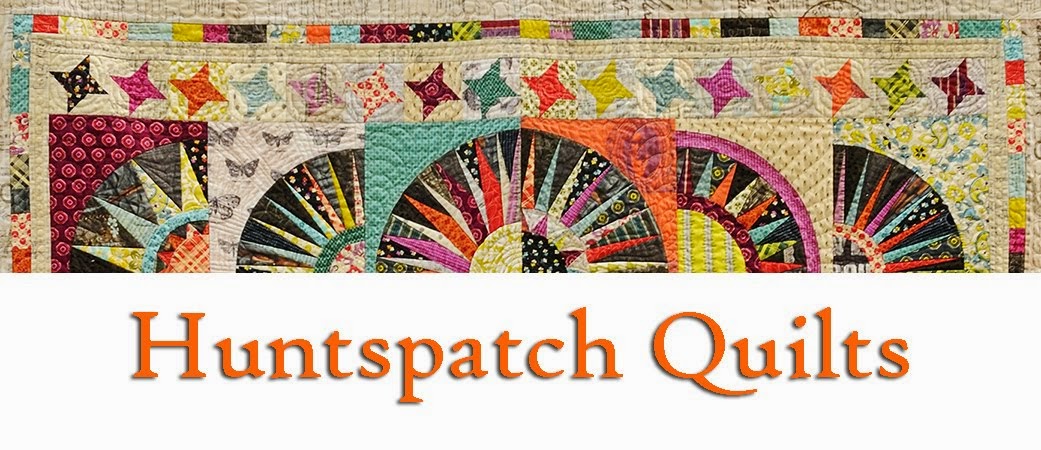I was inspired by Rebecca Bryan to keep each background piece as a single unit, rather than piecing them as quarters. I made a template for the quarter-piece using the pattern from the book, and used that to cut from a twice-folded piece of background fabric by aligning the straight seam lines on the template with the folds of the fabric. By carefully planning my folds and cuts, I was able to cut all the background from 2 yards of fabric (although I'd recommend having a half-yard or more extra in case of mistakes).
The images below show how I pieced the "melons" to the background pieces, and also how I pressed the seams. It took some trial and error to come up with a plan for pressing the seams that was workable. What I'll share is not exactly how I put mine together, but how I would approach it if I were to start again. (Please excuse my rough illustrations. I'm more familiar with photo editing than with vector drawing.)
I started by assembling "squircles" of four melons and a background piece. For each unit, I started with the lower left and upper right melons, and pressed the seams away from the melons. At this point, I still had all the foundation paper still in place.
I then added the upper left and lower right melons. After sewing these seams, I removed the papers from the inner arcs of the newly-added melons, and pressed these seams toward the melons.
Here's a photo of the intersection of the arcs from the back. Sewing this part was a little tricky, but it did not take long to get the hang of it.
This photo shows how the seams of adjacent arcs are pressed in opposite directions:
Once the "squircles" were all complete (with "half-squircles" at the top and bottom), I assembled the top along the diagonals.
This time, though, the assembly proceeded from upper left to lower right. The first seams were again pressed away from the arcs. When the diagonal rows were joined together, these seams were pressed toward the arcs, as shown by the arrows in this diagram:
This assembly illustration makes it appear that I used long continuous seams, but in reality I used partial seams and multiple starts and stops, so I could keep the concave portion on top as I sewed each arc.
The red circles in the diagram show some of the spots where the seams change directions. I "pinwheeled" the seams at these points. This was not necessary in the left- and right-most columns, thanks to the way I added the outside border pieces.
The purple circles above indicate another tricky situation. These are border areas where the seam needs to be pressed towards the arc, but the square gets in the way. I ended up unpicking a couple of inches between the square and the arc at these locations before sewing the background. Then, after pressing this seam towards the arc, I re-stitched the square to the arc. I'm sorry I did not get photos of this process, but here is how the end result looks from the back (after adding the border):
I hope to be quilting soon! I'm linking up with Lee for WIP Wednesday.







